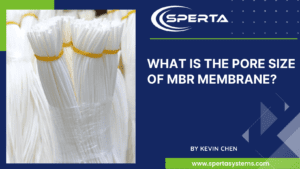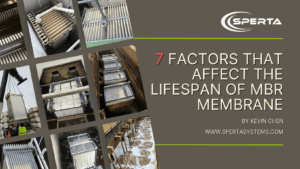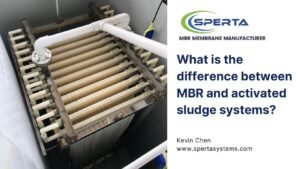When colloidal or dissolved microbial metabolites adsorb onto the surface of the membrane, and washing/air blowing cannot remove them. Which also caused TMP to rise. It is required the maintenance of chemical cleaning.
Step 1: Stop the suction pump and close the water pipe.
Step 2: Stay for 1 minute, close the blower to stop aeration.
Step 3: Open the dosing pipe, run the dosing pump, and inject the cleaning solution.
Step 4: Dilute the residual chlorine in the treated water before discharge.
Or return the treated water to the aerobic tank for residual chlorine dilution.
Step 5: Finish the above operations, open the suction pipe, run the suction pump, and resume regular operation.

PS:
● Type of chemical: NaClO, effective chlorine concentration 100~500ppm; 0.1 – 0.2% HCl, citric acid or oxalic acid.
● Chemical cleaning duration: 5 ~ 10 min.
● Cleaning frequency: TMP increases by more than 30 kPa or per 1 to 12 weeks after operating.
Record the duration when the TMP at the initial stabilization increases by 30 kPa and set it as one cycle. Regularizing the chemical cleaning can effectively extend the life-span of the membrane.








